"Prefabricated homes conjure up images of uninspired architecture, but Simpatico Homes is constructing sustainable houses out of factory-built modules that are beautifully designed. SmartPlanet's Sumi Das takes a tour of the Simpatico's prototype house."
Source: Smart Planet
Monday, 30 January 2012
Friday, 27 January 2012
Eco Automatic for Electrolux - AHHAPROJECT
 |
| Eco Automatic for Electrolux - AHHAPROJECT |
Fasinating work from AHHAPROJECT. As They explained briefly in their website:
"Eco Automatic sink is a clever use of space. The sink doubles up as a dishwasher! The idea came about when we realized the potential of space conservation when our sink was full of dirty dishes! The system works in a way that the dishes are cleaned within the sink, using the mechanics of a dishwasher..."
 |
| Eco Automatic for Electrolux - AHHAPROJECT |
 |
| Eco Automatic for Electrolux - AHHAPROJECT |
 |
| Eco Automatic for Electrolux - AHHAPROJECT |
For more: http://www.ahhaproject.com/
Wednesday, 25 January 2012
One of the Most Interesting Apps of 2011: Valeo's Park4U Remote Control App
Automotive equipment maker Valeo demonstrated an iPhone app at the 2011 International Motor Show in Frankfurt that will allow you to park your car.
The iPhone app doesn't allow you to steer your car. The remote control app allows you to only accelerate and brake, but it works in conjunction with Valeo's Park4U technology that can be found on cars from Lincoln, Ford, Audi, and Volkswagen, which uses sensors around the car and steering wheel control to automatically park cars into parallel and perpendicular parking spots
Source: http://www.engadget.com/2011/09/16/valeo-park4u-turns-your-phone-into-a-valet-parking-service-vide/
Monday, 23 January 2012
House in Imabari by Hayato Komatsu Architects
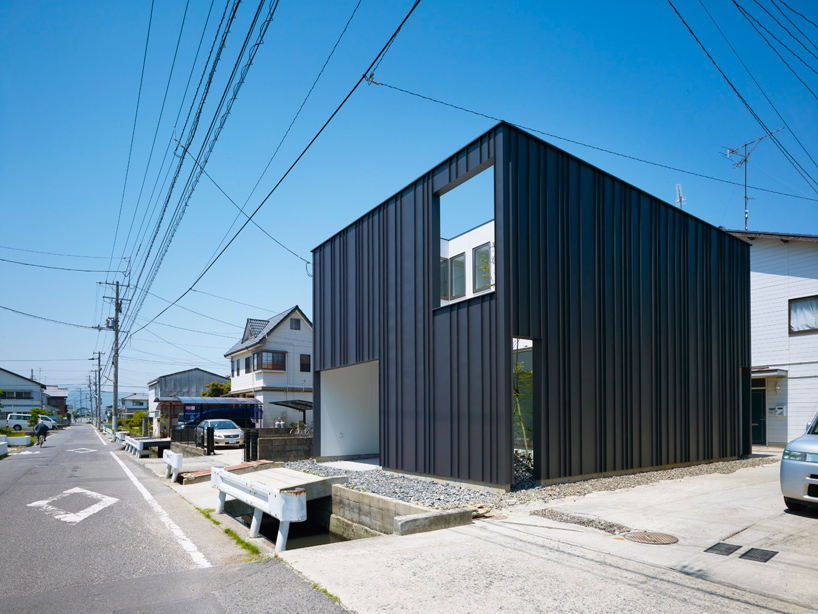
'house in imabari' by hayato komatsu architects in imabari, ehime, japan
all images courtesy hayato komatsu architects
Hiroshima-based practice hayato komatsu architects has designed the 'House in Imabari', a two-storey dwelling for a family of four in Ehime Prefecture, Japan. While the plot is not cramped by Japanese standards, the architects focused on providing pockets of ample outdoor space as well as a sense of privacy for the inhabitants.

street elevation
Cubic in form, the free-standing structure's exterior is defined by a dark metal skin with vertically-running ridges. large openings mimicking the form of windows puncture the elevations, exposing glimpses of an outdoor garden space that still remains private from the street. this external wall acts as a fence-like structure that defines a buffer zone between the residence and the neighbourhood while delineating the form of the overall architecture.

views into south garden

(left) opening from street - (right) front garden
Featuring two gardens to the north and the south, the design ensures optimal natural lighting and cross ventilation for the space within. on the ground floor, the open kitchen, living and dining area sits in between the outdoor zones, benefiting from an atmosphere that is constantly and directly interacting with the gardens. the wet programs such as the washroom and bath are partially sunken into the foundation to overlap the volume of the north garden with the ceiling height of the living space, creating a chasm in which additional light can enter the interior.

view into interior

living and dining space

towards kitchen

north garden with sunken in washroom unit

japanese style room by south garden

north garden

(left) stairs
(right) view of communal area from stairs

upstairs bedroom

entrance

(left) dining space at night - (right) north garden at night

entrance at night
Source: http://www.designboom.com/weblog/cat/9/view/18701/hayato-komatsu-architects-house-in-imabari.html
Friday, 20 January 2012
Alouette Lamp by Miles Keller
The Alouette Chandelier is based on the unique design of Canada’s Alouette satellite, launched into space almost fifty years ago on September 29, 1962.
Says Keller, "With it, Canada became the 3rd nation into space, symbolizing the country's entry into the digital age that was only just dawning. Canadians were no longer simply 'hewers of wood and drawers of water'."

While it is still in orbit to this day, it has been shut down long ago. In this context, the original shape and proportions are preserved while the satellite itself is re-imagined and repurposed. The Alouette chandelier makes a striking visual statement. The open/closed nature of the outer shell creates a spectacular lighting effect, producing beautiful light with a spectacular shadow pattern. The history and meaning of the Alouette satellite itself gives the lamp meaning and context.




Source: http://www.ideacious.com/details2000000048.htm?S=983772914&L=0
& http://mocoloco.com/fresh2/2011/12/13/alouette-lamp-by-miles-keller.php
Wednesday, 18 January 2012
Karim Rashid Designs NHow Hotel in Berlin

Image Courtesy of NHow Berlin
The NHow Berlin is an extension of the NH Hotels, a hospitality group mostly aimed at business travelers known for its quality service and their ability to immerse all properties into their surrounding communities with a great attention to detail and a knack for sustainability; ''Unconventional, life- affirmative, constantly in movement, locally rooted while at home anywhere in the world – an idea, in other words, corresponding to lifestyle of the new creative class.'' Design, art and music are the main features of the NHow.
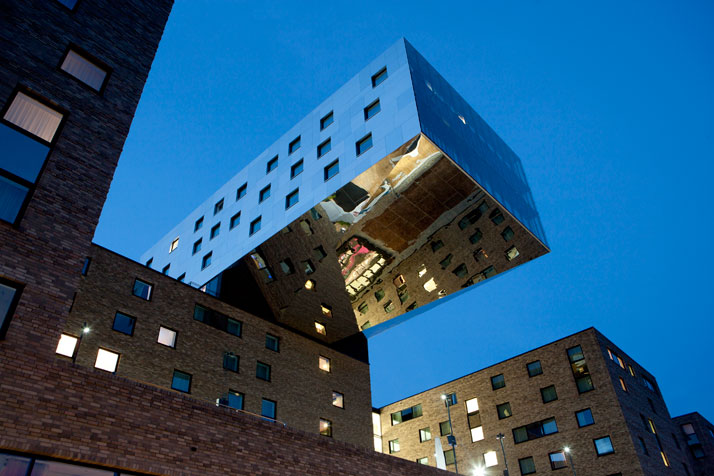
Image Courtesy of NHow Berlin
German architect Sergei Tchoban and Egyptian designer Karim Rashid worked together to surmount the task at hand, to marry the industrial style of local Berlin architecture with an unexpected and hip twist. The building would have to look contemporary, an introduction to the playful pop design inside, a way to showcase cheery bold colors while maintaining the edginess that gives this area of Berlin its ‘street cred’.
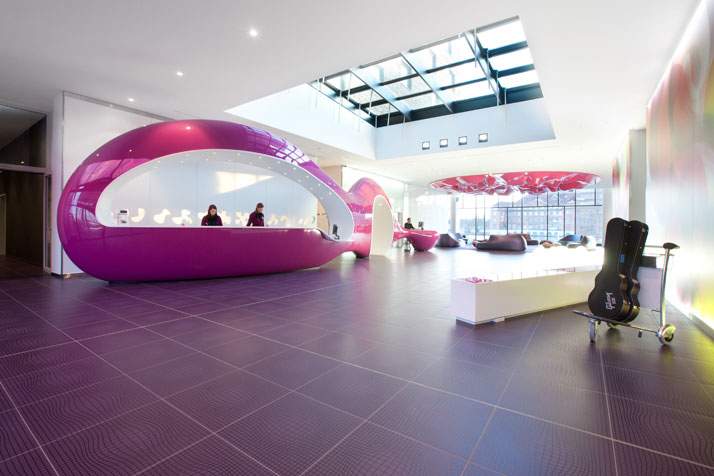
Image Courtesy of NHow Berlin
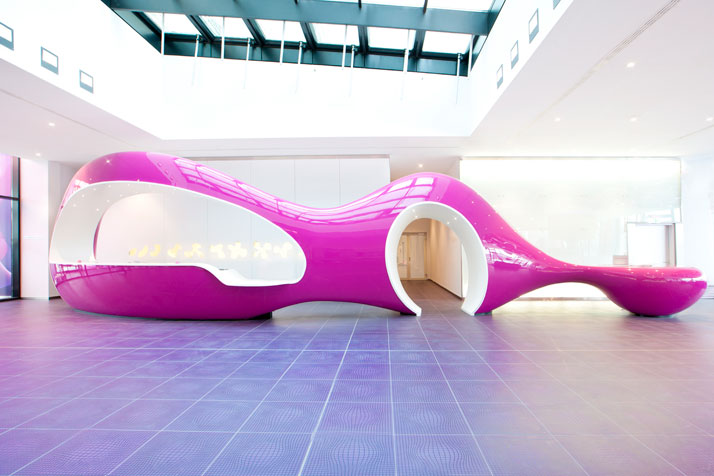
Image Courtesy of NHow Berlin
When one walks into the door you are enveloped by the imagination of Karim Rashid , a designer who has gained many accolades and awards for his work (which has been exhibited in museums across the globe including the Moma and the Centre Georges Pomipdou). Like a world straight out of his dreams, the bright colors and balloon shaped furniture are intoxicating… they are a wonderland for the creative traveler who may be looking for inspiration in their travels.

Image Courtesy of NHow Berlin
Karim Rashid was responsible for the interiors and the furniture design of the 304 rooms and suites of the hotel (233 standard rooms, 25 VIP class rooms, 45 junior suites and the NHow Suite) - furniture that was custom made for this exact hotel. Guests of the hotel can choose pink, blue, or grey rooms (all with floors to match). The aesthetic is referred to as ''digi-pop design'' in the hotel’s press literature and can best be described as a visual funhouse; liquid-like plastic, colorful lighting, bold colors everywhere, furniture that looks like it was puffed up, stretched out, and carved out of Play-doh… different shapes and sizes, a psychedelic treat throughout the hotel. The architect wanted to create a place you had never quite seen before, one that you couldn’t compare to prior experiences or spaces.

Image Courtesy of NHow Berlin
Rashid’s vision was intended by him to be a radical design movement, ''…calling for a break with old ways of looking and living, and the creation of a world free from nostalgia'': ''My vision engages technology, visuals, textures, colour, as well as all the needs that are intrinsic to living in a simpler less cluttered but more sensual environment. Design touches us on every level, and design can continue to define and shape our dimensional interior environments and create new progressive human behaviors, and new languages. I always question whether the physical world is as experiential, as seductive, as connective, as inspiring, as personalizable, and customizable as the digital world.'' Rashid goes on to discuss some of the objects and new vocabulary he has developed along with the designs that were realized for the hotel, words and terms like ‘Infosthetic”, ‘blobject’, and ‘technorganic’. The designer truly approached this project with a desire for utter originality every step of the way, his vision was about all to bring something striking and creative to the city of Berlin. His very own world.
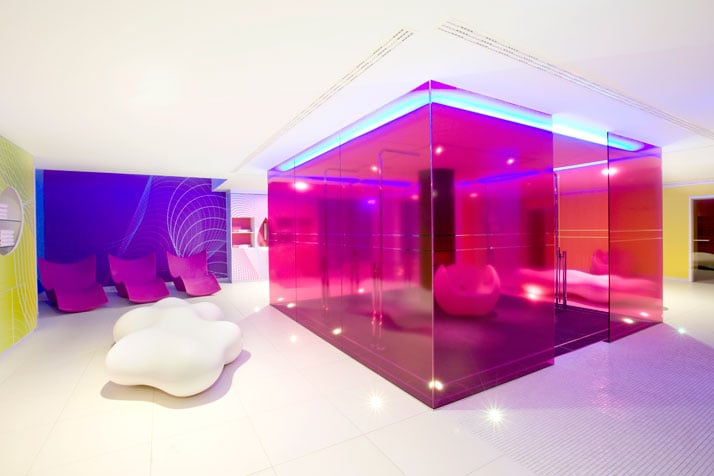
Image Courtesy of NHow Berlin
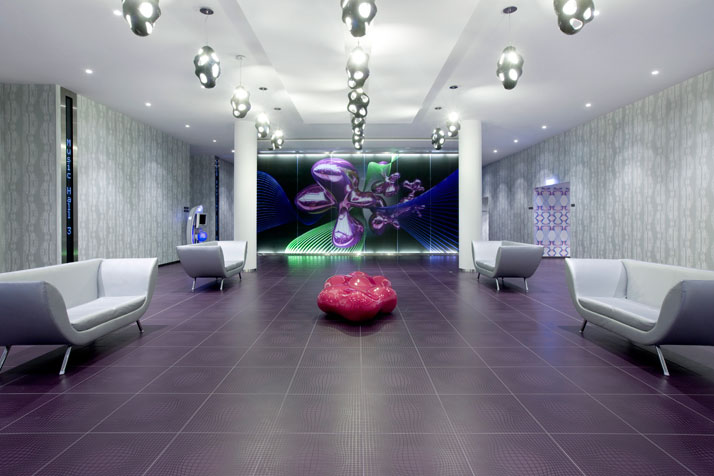
Image Courtesy of NHow Berlin
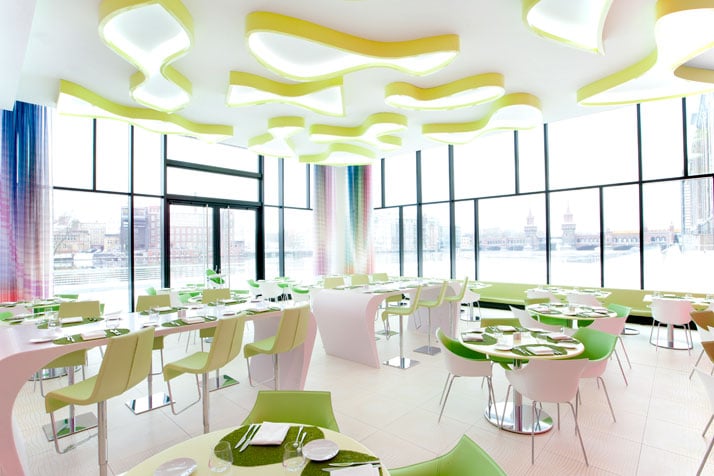
Image Courtesy of NHow Berlin
Source: http://www.yatzer.com/NHow-Hotel-in-Berlin
Monday, 16 January 2012
Twist 2-in1 Whisk by Joseph Joseph
From @josephjoseph_uk, a 2-in1 silicone whisk; a flat whisk that, with a simple turn of the handle, also becomes a highly effective balloon whisk.

"As a flat whisk, Twist is ideal for mixing sauces in low pans or for making gravy in roasting trays. Its silicone-coated steel wires are suitable for non-stick cookware and are perfect for scraping and combining ingredients together, preventing them from burning on the bottom of a pan. Then, with a simple turn of the handle, Twist™ also becomes a highly effective balloon whisk, allowing egg whites to be whipped into peaks of perfection. All the parts can be easily separated for cleaning and, after use, Twist™ can be closed flat for convenient storage in a drawer. Its silicone wires are heat-resistant up to 520°F."
Source: mocoloco , by Harry

"As a flat whisk, Twist is ideal for mixing sauces in low pans or for making gravy in roasting trays. Its silicone-coated steel wires are suitable for non-stick cookware and are perfect for scraping and combining ingredients together, preventing them from burning on the bottom of a pan. Then, with a simple turn of the handle, Twist™ also becomes a highly effective balloon whisk, allowing egg whites to be whipped into peaks of perfection. All the parts can be easily separated for cleaning and, after use, Twist™ can be closed flat for convenient storage in a drawer. Its silicone wires are heat-resistant up to 520°F."
Source: mocoloco , by Harry
Friday, 13 January 2012
Volna : Floor-Mounted Table by Nuvist
"It was very important to create soft and serene experience in the tangible and the visual sense for this type of table design. The new technologies and the modern materials were the main ingredients for the creation and these provide us to design an unbroken continious form. In this way, Volna Table has met both the functionality and a unique elegance look and it has been shaped like a wave and features an incessant flow.
This kind of furniture can be considered a sculptural artistic piece which can fit any modern interiors and even though it can be arranged with different design styles.
Singular flowing design of Volna Table will make your interior become a dynamic and energizing place. It is suitable for different kind of places such as houses, office places, hotels, stores, exhibitions or luxury places."
Source: http://www.nuvist.com/wp/2011/12/volna-floor-mounted-table-by-nuvist/
Wednesday, 11 January 2012
miniME and the Future of Integrated Health Care
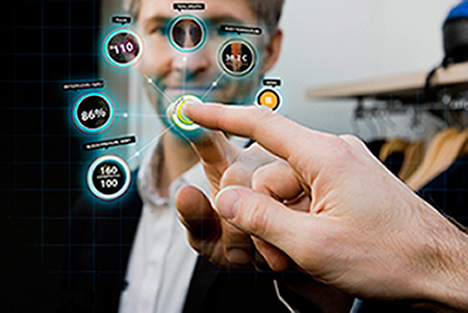
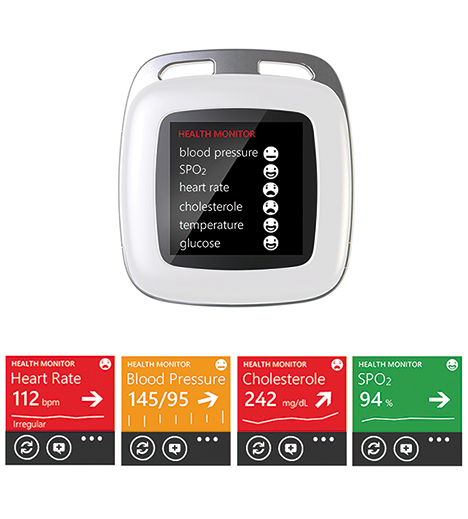
"After over 40 years of pioneering work in the Life Science industry, a multidisciplinary design team at Ergonomidesign put together their take on the future for the Health Care industry. Their challenge was to envision the future and develop possible solutions for the world to test, use and reflect on. The outcome has generated many discussions, both in the Design and Life Science industries as well as with politicians and policymakers in the European Union.
This article describes how Ergonomidesign developed a vision of the future for Life Sciences and how this served as a guide as their designers prototyped how we might manage our own health and interact with doctors, family and other medical professionals and services in the year 2015.
An Integrated Future of Health Care in the Year 2015
Our aim was to illustrate the body as a container of biometric data. The simple act of placing your hand on 'a table' or any other type of smart surface, triggered an enlightened experience, e.g. you will be able to share and compare your biometric data with people you trust, subscribe to personalized treatment software and also have easy and constant access to your health care professionals.
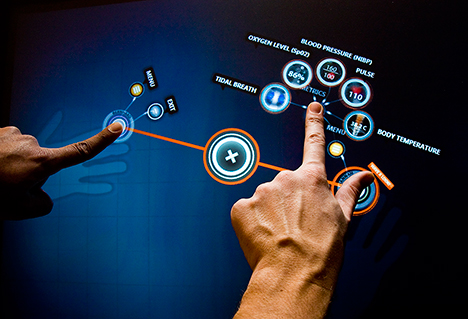 |
| Reading biometric data on Surface |
 |
| miniME placed on Microsoft Surface displaying Hannah's biometrics. |
In late 2010, we introduced miniMe. This futuristic medical device is a personalized monitoring device offering patients and their network constant access to bio data. Core to the idea was that to support better interaction between people, devices and smart surfaces, it should be possible for all connected devices to be used separately or together with the Surface application. In concept, miniME uses biometric sensors placed on a patient's body to track health stats using RFID (Radio Frequency Identification) and NFC (Near Field Communication). It forwards their health stats through cloud computing so that patients, family members and HCPs can have constant access to data about their physical condition...

As experts in user-driven innovation with 40 years' of experience working with different types of users within the medical field, we are well aware that most of the proposed technologies are readily available on the market and that attempts are being made to bring them to life for consumers. Connected devices, networking and communicating through social media channels are all increasingly important and commonplace. In the future, we believe it will feel natural for us to use the same type of connected services for managing our health...
miniME recently won one of the world's most prestigious design awards, the IF product design award 2012. But as we write this article it has become clear to us that what we are the most proud of is the opportunity to increase the awareness among decision makers about how designers can significantly contribute in the development of health care services to increase the quality of life for people."

Using both software and hardware functioning prototypes, our vision of the future was finally possible to share. Our prototypes made it much easier for people to test, use and reflect on all parts of our suggested eco-system in an engaging way. We gave our audience the experience of actually being able to explore the future of health care...As experts in user-driven innovation with 40 years' of experience working with different types of users within the medical field, we are well aware that most of the proposed technologies are readily available on the market and that attempts are being made to bring them to life for consumers. Connected devices, networking and communicating through social media channels are all increasingly important and commonplace. In the future, we believe it will feel natural for us to use the same type of connected services for managing our health...
miniME recently won one of the world's most prestigious design awards, the IF product design award 2012. But as we write this article it has become clear to us that what we are the most proud of is the opportunity to increase the awareness among decision makers about how designers can significantly contribute in the development of health care services to increase the quality of life for people."
Monday, 9 January 2012
Residence by Dowling Studios

From Dowling Studios, a contemporary hilltop house, certified LEED Platinum, in California's Sonoma wine country with expansive views of the Russian River Valley.
Friday, 6 January 2012
Transforming an Abandoned Barn into a Family Home
A converted stone barn in rural Caceres, Spain, where "the aim was to transform an abandoned barn into a family home through a comprehensive rehabilitation, that was consistent and respectful of the environment."
A large central space was reserved for the living room and kitchen, off of which are arranged the private rooms.
More at Ábaton Arquitectura. Photos: Belén Imaz.
Source: http://mocoloco.com/fresh2/2011/12/24/finca-en-extremadura-by-abaton-arquitectura.php
Subscribe to:
Posts (Atom)













